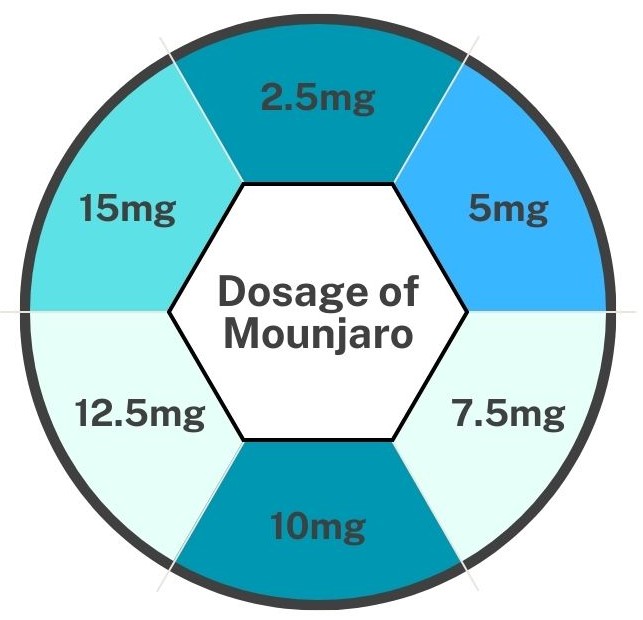Mounjaro, initially registered and approved for diabetes has now been approved for weight loss in Australia. Explore the dosage and effectiveness of the medication.
What is Mounjaro?
Mounjaro is a weekly prescription injection designed for adults dealing with type 2 diabetes or weight management issues. The key component, tirzepatide is a combination medication. It imitates the actions of GIP (glucose dependent insulinotropic polypeptide) and GLP-1 receptors (glucose-like peptide).
Mounjaro is currently available in a vial and pen form. It can be injected into the lower abdomen, thigh or upper arm.
Mounjaro dosage

There are various doses of Mounjaro. The 2.5mg and 5mg are available in the vial form. The other 6 different strengths are projected as dosing pens, one each for single use.
New to treatment: 2.5mg once per week for the first four weeks.
Ongoing treatment: 5mg + once per week starting at week five with maximum dosage at 15mg weekly.
The dose may vary based on lifestyle, height, weight, level of insulin resistance, activity level and personal or family history.
If the medication is used for diabetes and the blood sugar levels are still not under control with 5mg once per week, the doctor may increase the dose. At the time of increasing the dose, the common side effects should be closely monitored. Symptoms such as nausea, vomiting and diarrhea are likely to be experienced.
Missed or overdose
The Mounjaro dosage should be taken on the same day each week, generally at the same time. If a dose is missed, it should be taken as soon as possible within four days of the missed dose. For time greater than four days, skip that week and continue as per schedule.
In the incident of overdose on Mounjaro, there may be severe adverse effects such as nausea and vomiting. Low blood sugar can be experienced which can include dizziness, confusion, increased heart rate, shakiness and fatigue.
Availability
Mounjaro has now been released in a Kwikpen form. It was approved by the TGA in 2022 and was released in its vial form in 2023 with the autoinjector being released later in August 2024.
Storage
Mounjaro should be stored at a temperature between 2-8 degrees celsius. It can be left unrefrigerated for up to 21 days if the temperature never exceeds 30 degrees. The pens should not be frozen.
Mounjaro for diabetes
In type 2 diabetes, the body’s ability to respond to insulin is compromised, resulting in elevated blood sugar levels, known as hyperglycemia.
Supported by research, the hormones in Mounjaro (GLP 1 and GIP), work together to trigger insulin secretion after meals. Insulin then assists in either utilizing or storing glucose (sugar) in the body, a function usually affected by type 2 diabetes. Mounjaro effectively enhances insulin secretion and improves insulin sensitivity. Hence when combined with a proper diet and exercise, it effectively manages blood sugar levels.
Is Mounjaro effective for Weight loss?
In a 72-week clinical trial with overweight participants who received weekly injections notable benefits in weight management were seen. Additionally, clinical trials sponsored by Eli Lilly found obese patients lost as much as 20 percent of their body weight on the highest doses of the drug. In the study trial the participants lost weight on 15mg and 10mg weekly dose.
Mounjaro’s recent approval for weight loss is due to its mechanism in suppressing appetite and inducing a prolonged feeling of fullness. By reducing food intake and slowing down the stomach’s digestion process, it may contribute to weight management. It is most effective when combined with a healthy diet and exercise.
Consult Doctor
Individuals wanting to start their weight loss journey should consult a doctor about which option would be suitable for them. Mounjaro and other alternatives like Wegovy and Saxenda are all prescription medications for weight management. It’s crucial to have a thorough conversation with a healthcare provider to determine the most suitable approach.